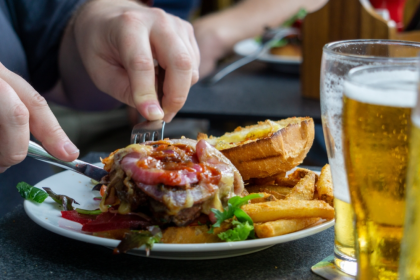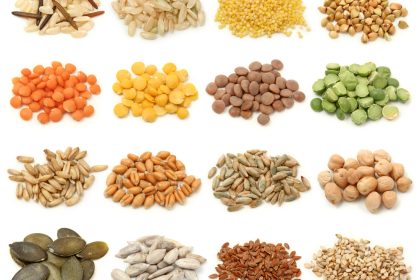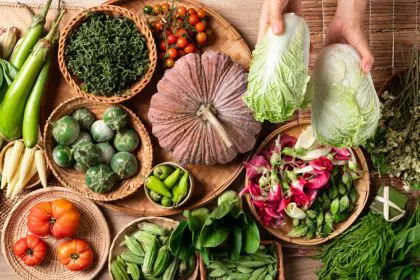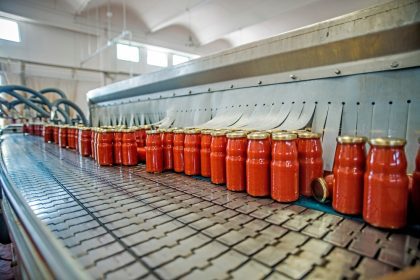That innocent-looking donut might be triggering more powerful brain responses than the vodka it’s sometimes paired with. While society readily acknowledges alcohol’s addictive potential, we still treat sugar cravings as harmless indulgences or simple matters of willpower. Yet emerging research reveals that sugar addiction can be more difficult to overcome than dependence on what we traditionally consider more serious substances.
The struggle to step away from the cookie jar isn’t just about weak self-control but involves complex neurochemical responses, social factors, and biological drives that rival or exceed those seen in alcohol dependence. Understanding these powerful mechanisms helps explain why well-intentioned attempts to “just eat less sugar” often fail, leaving people trapped in cycles of craving, consumption, and guilt that feel eerily similar to other forms of addiction.
Let’s explore the surprising reasons why your sweet tooth might be harder to tame than alcohol dependence, and why this understanding demands a more compassionate approach to those struggling with sugar’s powerful pull.
The dopamine hijack
When you bite into something sweet, your brain’s reward center lights up with activity that looks remarkably similar to brain scans of people using cocaine or alcohol. Sugar triggers an immediate dopamine release that exceeds what most other natural rewards provide, creating a neurochemical surge that your brain is literally hardwired to seek repeatedly.
What makes sugar particularly potent is how rapidly it elevates dopamine levels. Unlike alcohol, which must be metabolized before affecting brain chemistry, sugar hits your reward pathways almost instantly. This immediate gratification creates a tighter connection between the behavior and the reward, strengthening the addictive pathway with each sweet treat.
Even more troubling is how sugar addiction progressively alters dopamine receptors over time. Regular sugar consumption leads to tolerance—needing increasingly larger amounts to achieve the same pleasurable effect. This downregulation of dopamine receptors mirrors what happens in substance use disorders, creating a biological drive to consume more sugar just to feel normal rather than to experience pleasure.
This neurochemical hijacking helps explain why sugar cravings can feel so urgent and overwhelming. Your brain isn’t simply suggesting that sugar might be nice—it’s sending signals that sugar is necessary for normal functioning, creating a biological mandate that feels increasingly difficult to override through willpower alone.
The daily temptation gauntlet
Unlike alcohol, which can be completely avoided by steering clear of bars and liquor stores, sugar lurks everywhere in modern environments. This constant exposure creates a unique recovery challenge that alcohol simply doesn’t present. An alcoholic can avoid walking down the beer aisle, but the sugar addict must navigate endless temptations integrated throughout daily life.
The workplace break room with its ever-present donuts, the checkout line’s candy display, the birthday celebrations with obligatory cake—sugar addicts face hundreds of exposure points weekly that require active resistance. This relentless temptation gauntlet depletes willpower through what psychologists call “decision fatigue,” making each subsequent exposure more difficult to resist as the day progresses.
What makes this particularly challenging is that refusing sugar often carries social consequences that declining alcohol doesn’t. While most people readily accept when someone declines a drink, refusing birthday cake or holiday cookies frequently triggers pressure, questioning, or even offense from others who don’t view sugar as a legitimate addiction concern.
This combination of ubiquitous presence and social pressure means sugar addicts must exert constant vigilance and boundary-setting that alcohol abstainers can often avoid through simple environmental management. The resulting willpower depletion creates recovery challenges that frequently exceed those faced in alcohol dependence.
The overnight withdrawal nightmare
Sugar addiction creates withdrawal symptoms that can be surprisingly severe and disruptive to daily functioning. Unlike alcohol withdrawal, which is widely recognized as a serious medical concern requiring support, sugar withdrawal symptoms often get dismissed as “cravings” or appetite, leaving those experiencing them without validation or assistance.
These withdrawal effects typically begin within 24 hours of reducing sugar intake significantly. Headaches often strike first, followed by intense irritability, anxiety, and depressed mood that can mimic clinical depression. Physical symptoms including muscle aches, nausea, and even flu-like effects frequently appear by day two or three, creating discomfort that can persist for weeks in severe cases.
Sleep disruption represents one of sugar withdrawal’s most debilitating aspects. Many people experience insomnia or restless sleep during the first weeks of sugar abstinence, creating a sleep debt that further diminishes the willpower needed to maintain new eating habits. This creates a perfect storm where you most need decision-making energy precisely when withdrawal is depleting it.
What makes these withdrawal symptoms particularly challenging compared to alcohol is their somewhat delayed appearance. While alcohol withdrawal typically peaks within 72 hours, sugar withdrawal symptoms often intensify after several days of abstinence and can persist for weeks, creating a prolonged recovery challenge that tests even the strongest resolution.
The emotional comfort connection
Sugar’s role as an emotional regulation tool creates addiction patterns intertwined with psychological coping mechanisms in ways that often exceed alcohol’s emotional associations. For many people, sugar consumption begins in childhood as rewards, celebrations, and comfort, creating deeply ingrained neural pathways connecting sweet tastes with emotional safety and love.
This emotional programming means that sugar cravings frequently intensify during times of stress, sadness, or anxiety, as your brain automatically seeks the comforting neurochemical effects associated with childhood soothing experiences. Unlike alcohol, which typically enters life during adulthood with fewer foundational emotional associations, sugar’s comfort connection often has decades-long reinforcement before addiction recovery even begins.
The resulting pattern creates a double challenge—not only must you overcome the biochemical addiction, but you must simultaneously develop entirely new emotional regulation strategies to replace sugar’s role in your coping toolbox. This dual recovery process demands psychological resources that alcohol abstinence may not require to the same degree.
What makes this emotional dimension particularly difficult is how sugar’s effects mirror what therapists call “anxiolytic” properties—the ability to temporarily reduce anxiety. The blood sugar spike creates a brief sensation of calm and wellbeing that genuinely does reduce psychological distress in the short term, reinforcing sugar’s role as an effective, if ultimately harmful, emotional medication.
The biological starvation response
Perhaps sugar addiction’s most formidable challenge involves how reducing consumption triggers primal survival mechanisms that alcohol abstinence doesn’t activate. Your body interprets sudden sugar reduction as potential starvation, initiating a cascade of biological responses designed to drive you back to this energy-dense food source.
This survival programming manifests as persistent hunger signals that override rational thinking. Ghrelin—your primary hunger hormone—increases dramatically when sugar intake drops, creating physical sensations of emptiness and appetite that can feel impossible to ignore. Meanwhile, leptin—your satiety hormone—becomes less effective at signaling fullness, creating a biological double-bind pushing toward increased consumption.
What makes this mechanism particularly powerful is its activation of survival-level brain regions that can override prefrontal cortex control. As your hypothalamus responds to perceived energy restriction, it gradually diminishes activity in brain areas responsible for willpower and rational decision-making, essentially reducing your biological capacity to maintain sugar abstinence over time.
The resulting experience feels less like fighting a craving and more like battling your body’s fundamental survival programming. While alcohol abstinence certainly triggers desire pathways, it doesn’t activate these primal survival mechanisms that evolved specifically to prevent starvation through seeking energy-dense foods.
The hidden habitat
Sugar’s presence in unexpected foods creates an addiction challenge that alcohol doesn’t share—the problem of hidden exposure. While alcohol is clearly labeled and contained in specific products, sugar hides under dozens of different names in approximately 75% of packaged foods, including many marketed as “healthy” or “natural.”
This stealth presence means sugar addicts must develop significant nutritional literacy just to maintain abstinence. Reading labels becomes a necessary skill, requiring knowledge of sugar’s many aliases from obvious terms like “cane syrup” to more obscure ingredients like “maltodextrin” or “dextrose” that don’t immediately signal their role as sugar sources.
What makes this particularly challenging is how these hidden sugars can trigger cravings and renewed addiction cycles without conscious awareness. Consuming sugar-containing foods marketed as healthy can reactivate addiction pathways and withdrawal cycles, creating frustrating recovery setbacks that seem to come from nowhere when the actual cause is hidden sugar exposure.
This invisibility factor demands vigilance levels that alcohol recovery simply doesn’t require. An alcohol abstainer can easily identify what contains their addictive substance, while sugar addicts must maintain constant investigative awareness just to navigate daily food choices without accidental exposure.
The social acceptance barrier
Perhaps the most insidious challenge in overcoming sugar addiction involves its social acceptance and even celebration in contexts where we’d never consider promoting alcohol. This normalization creates recovery barriers that alcohol abstainers don’t face, as sugar addiction recovery means standing against powerful social norms rather than being supported by them.
Holiday celebrations centered around sugar-laden traditions, workplaces where bringing donuts earns social points, family gatherings where refusing Grandma’s famous dessert seems unthinkable—sugar addicts must navigate these situations without the social support framework that recognizes the legitimacy of their recovery efforts.
Even the language around sugar consumption undermines recovery. Terms like “cheat day,” “guilty pleasure,” and “being good” frame sugar consumption as moral choices rather than addiction management, creating psychological frameworks that undermine long-term recovery success through cycles of restriction and indulgence.
What makes this particularly challenging is how often well-meaning people actively sabotage sugar addiction recovery. Comments like “one won’t hurt” or “everything in moderation” represent social pressures that would be considered wildly inappropriate if directed at someone recovering from alcohol addiction, yet sugar addicts face these undermining messages constantly.
The path to overcoming sugar addiction requires recognizing these unique challenges that often exceed alcohol’s addictive grip. By understanding the powerful neurochemical, environmental, biological, and social forces maintaining sugar dependence, we can develop more effective approaches to breaking free from sugar’s surprisingly powerful hold on both body and mind.


















